Have you ever hit that point where you feel like no matter how hard you work, your projects just keep piling up higher and higher? Late nights, early mornings, and endless caffeinated beverages just to keep your head above water – we’re sure many project managers can relate to that feeling of failing to catch up with the pressing demands.
Project management is hard, but effective resource planning is one of those things that can make it much easier and help you avoid project burnout, costly delays, and productivity problems.
Whether you’re a seasoned pro or just starting out in the project management world, this blog post will take you by the hand and show you the ropes of effective resource planning. From understanding its importance to mastering the art of building your own resource plan, we’ll provide you with all the tips, tricks, and insights you need to navigate the murky waters of resource planning with ease.
Let’s get right to it!
Resource Planning Defined
Resource planning is the process of strategically managing and allocating the necessary resources for a particular project or organization. It ensures that all resources are used efficiently and effectively to achieve the desired outcome while minimizing costs and maximizing productivity.
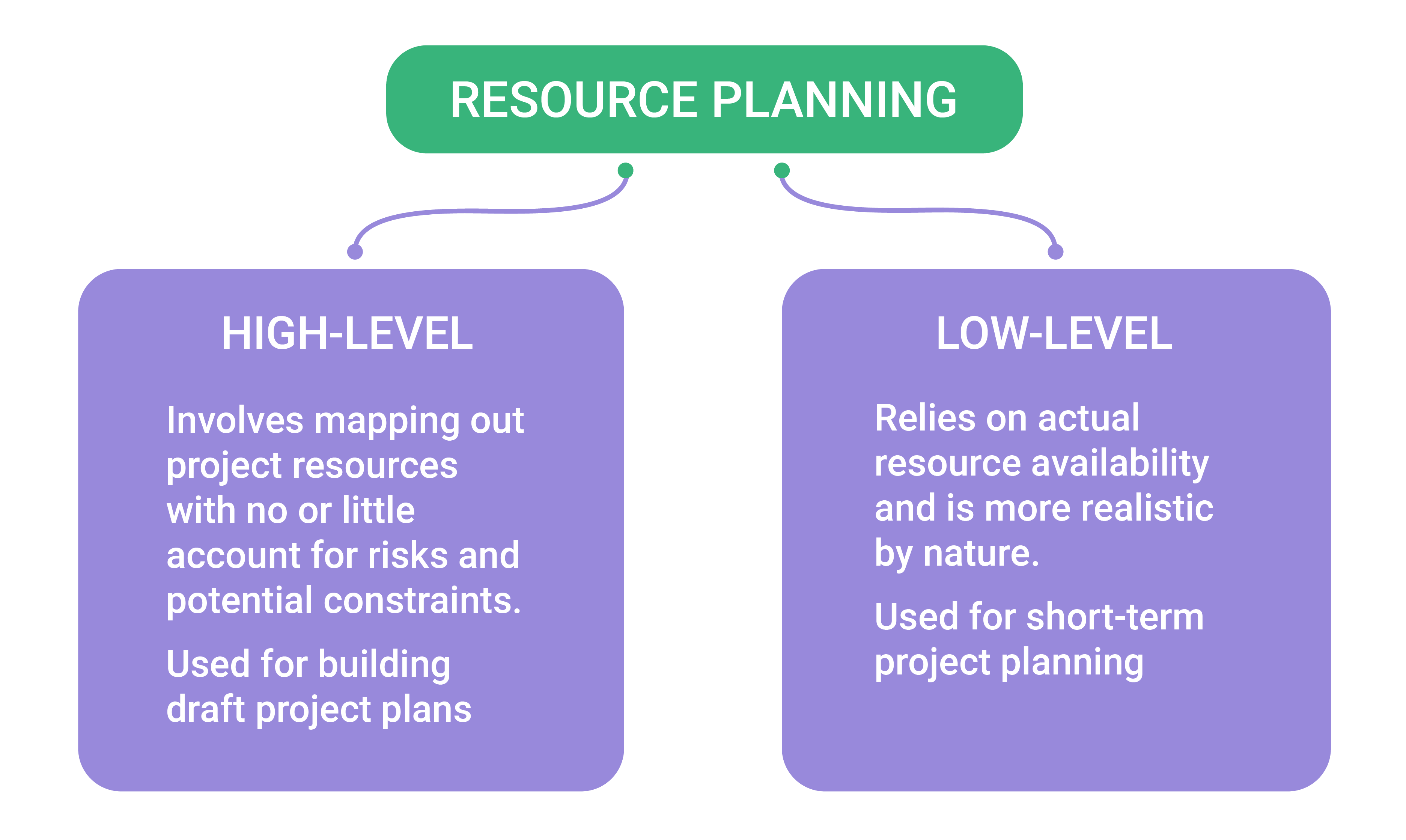
Resource Plan: Must-Have Components
A resource plan is a blueprint that outlines the resources required for a specific project or task, including personnel, materials, equipment, and budget. It serves as a vital tool for keeping people on track and ensuring that projects are completed on time, within budget, and to the desired quality.
Here’s a full list of essential elements that every resource plan must include:
- Project scope – A clear picture of what stakeholders want to achieve and what the project should deliver.
- Resource identification – A comprehensive list of resources required for the project, including personnel, materials, equipment, etc.
- Resource availability – Information about the availability of resources, their skills, and expertise, as well as any potential conflicts.
- Resource allocation – Information on which resources are assigned to the project, their roles, responsibilities, and reporting lines.
- Timeframes – A realistic timeline or schedule of the project, including its start and end dates, milestones, and intermediary delivery dates.
- Risk management – A summary of potential risks, their likelihood, impact, and applicable mitigation strategies.
- Project budget – An accurate estimate of project costs, including labor, materials, and other expenses.
Planning Resources for a Project: Step-by-Step Guide
Step 1: Review project management deliverables
Before you get to scheduling resources for your project, you need to get familiar with existing project management deliverables. These typically include the following:
- Project charter that outlines high-level requirements of the project
- Work breakdown structure (WBS) that maps out project deliverables and required activities
- Project schedule
- Risk management plan
These deliverables will introduce you to the project, its schedule, risks, and requirements that have been approved by clients and stakeholders and that will be relied upon during the course of the project.
Step 2: List out and estimate resources required for project success
Now that you have project requirements and a schedule, you can identify and evaluate the resources required, including equipment, tools, and, most importantly, human capital.
When assessing human resources, you need to take multiple things into account:
- First of all, consider the expertise, skills, and certifications of the employees and take care of the expertise and efforts that are missing by hiring additional staff and third-party contractors, or outsourcing a part of the project efforts.
- Along with that, be aware of employees working irregular work schedules and take into account applicable HR policies, including leave management policy (i.e., How many days off can each employee take during the course of a project? What happens if somebody calls in sick? etc.).
Individual project activities also require estimation, otherwise, you won’t be able to follow the project and make sure that your team delivers on time. So, if you don’t have task estimates, priorities, and deadlines mapped out in your WBS or project schedule, you need to do it before project initiation.
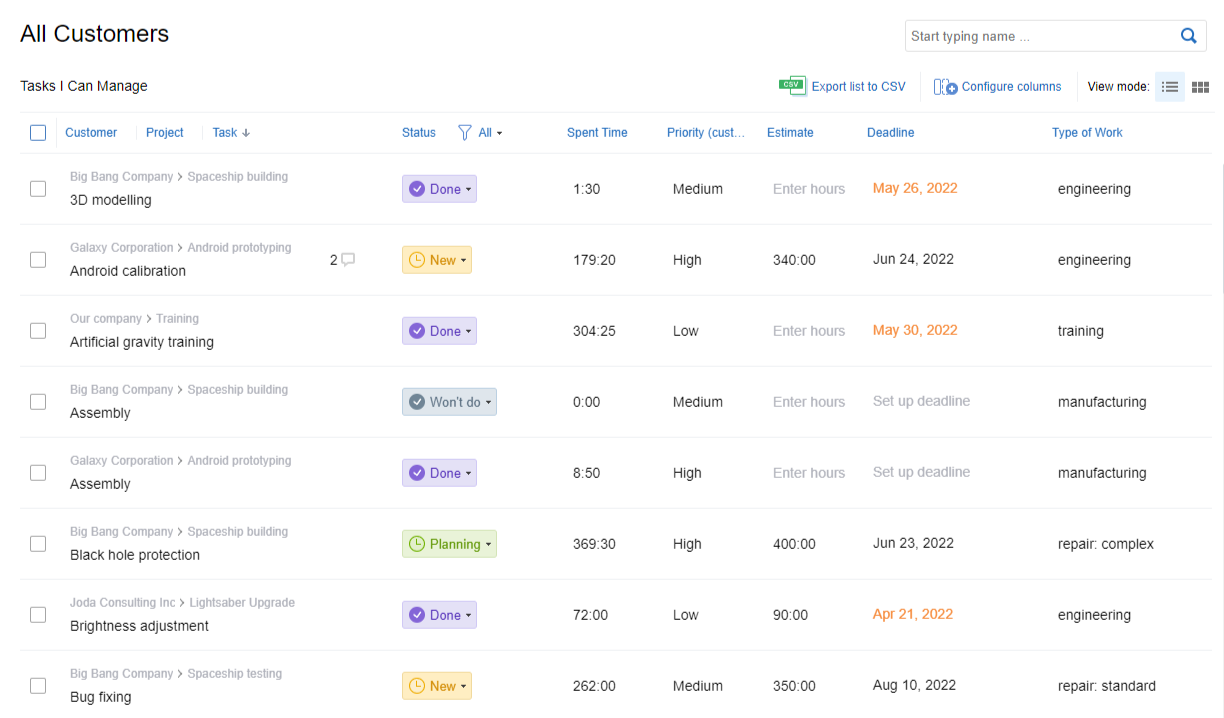
Use actiTIME to plan out work, communicate performance expectations to employees, and see how your project goes.
On top of that, you need to estimate and allocate other resources as well. For example, if a project requires that you purchase specific tools, software, or materials, you should consult with your procurement manager. The ultimate goal of this step is to ensure that no disruptions to the project will be caused due to a shortage of project resources.
Discover some of the most useful project estimation techniques here 👈
Step 3: Distribute workload across your team
Once you have evaluated the resource capabilities, you need to assign the right people to the right tasks based on their expertise and availability.
To make your assignments reliable, it would be best to use an accurate estimate of how long each of these tasks would take to complete. Combine estimates with employee attendance schedules to make sure that no unattended task interruption will follow.
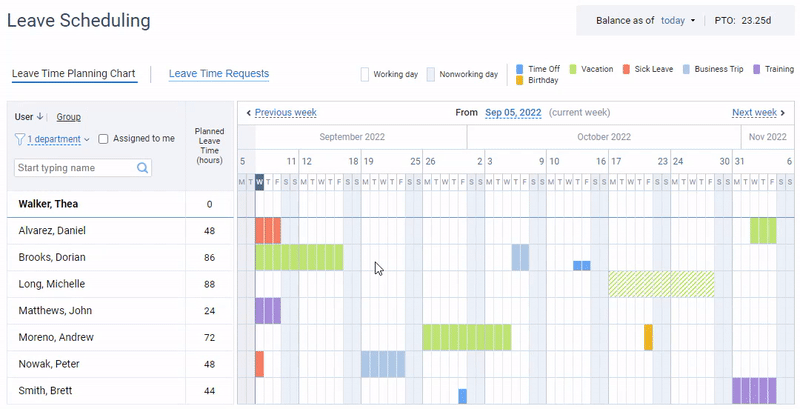
Track employees’ leave time and absences with actiPLANS to improve your resource planning outcomes
Step 4: Track working time
After you have assigned tasks to your team members, inform them about the set time estimates and deadlines and get everyone to track their working time against their tasks.
Time and cost metrics alone can give you insight into project progress, team productivity, ongoing expenses, and compliance with the project budget and schedule. Hence, it’s vital to keep them in check as the work on the project is advancing.
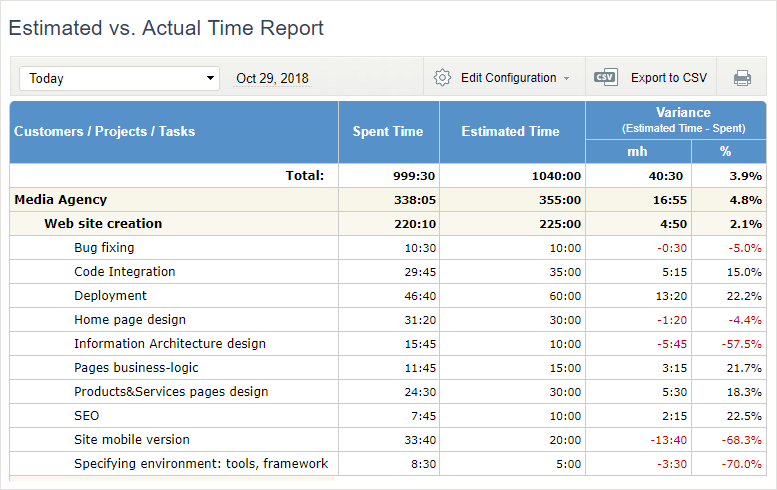
Compare your project estimates to actual results using actiTIME reports and charts
Time is one of the triple constraints of project management along with cost and scope. But unlike the other two, it’s also a non-renewable project resource, which makes time management the key pillar of successful project delivery. So, consider implementing time tracking software to keep project health, tasks, people, costs, and attendance in check.
Step 5: Identify bottlenecks and adjust quickly
Often, team members may get stuck on an issue that they cannot resolve and that’s how a bottleneck appears.
Bottlenecks hinder project progress, cause delays, increase costs, and can often require employees to work extra hours to meet deadlines. The rule of thumb here is to act fast and not allow bottlenecks to persist and let your project get sidetracked.
To improve resource utilization, prevent bottlenecks, and minimize their negative effects, you need to identify and address them early on. Tools like Gantt charts and Kanban boards will help you visualize project progress and eliminate blockers in a timely manner.
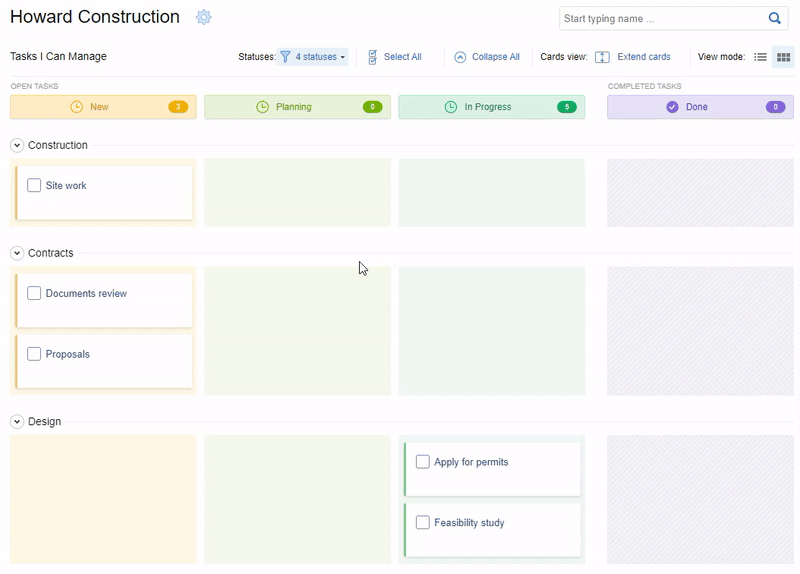
Track work in progress and detect any bottlenecks early on using the Kanban board interface in actiTIME
Bottlenecks also happen when a team member takes a leave of absence, the transition to another work mode or type of work schedule, which in turn will require you to reassign their tasks or change the deadlines.
A team calendar software or absence management software will help you stay in control of your team’s planned and unplanned leave time, work schedule changes, availability, and more.
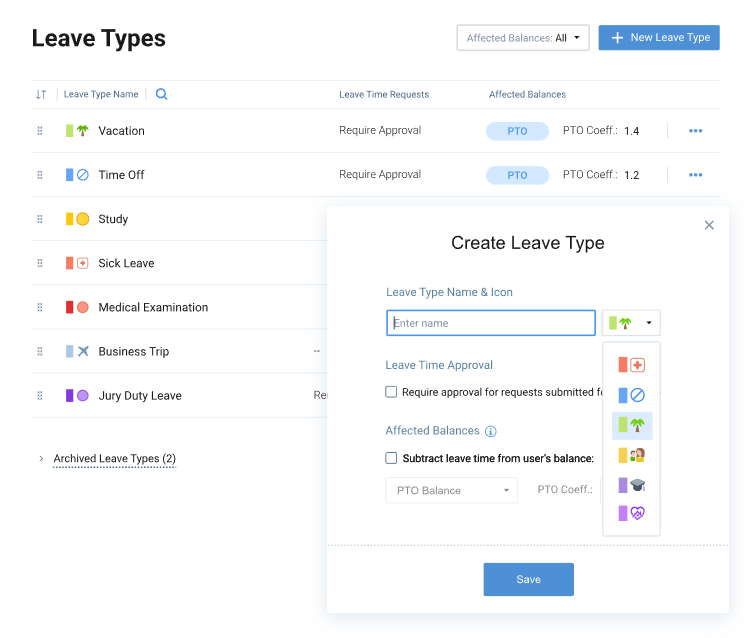
Leave management in actiPLANS – create an unlimited number of leave types, get your team to request and plan their time off, and review employee availability
Step 6: Monitor and mitigate project risks
Risk management is an important part of the project management process that helps the project remain on track and meet its goal. In terms of resource management, it helps managers minimize unexpected resource expenses and project costs, maintain productivity, and decrease the chances of project delays.
At the project planning phase, you must already have a developed risk management plan or Risk Breakdown Structure listing potential risks and providing a contingency plan with action steps to be taken if a risk event should occur. To track cost, schedule, and operational risks, you can use resource planning and scheduling software.
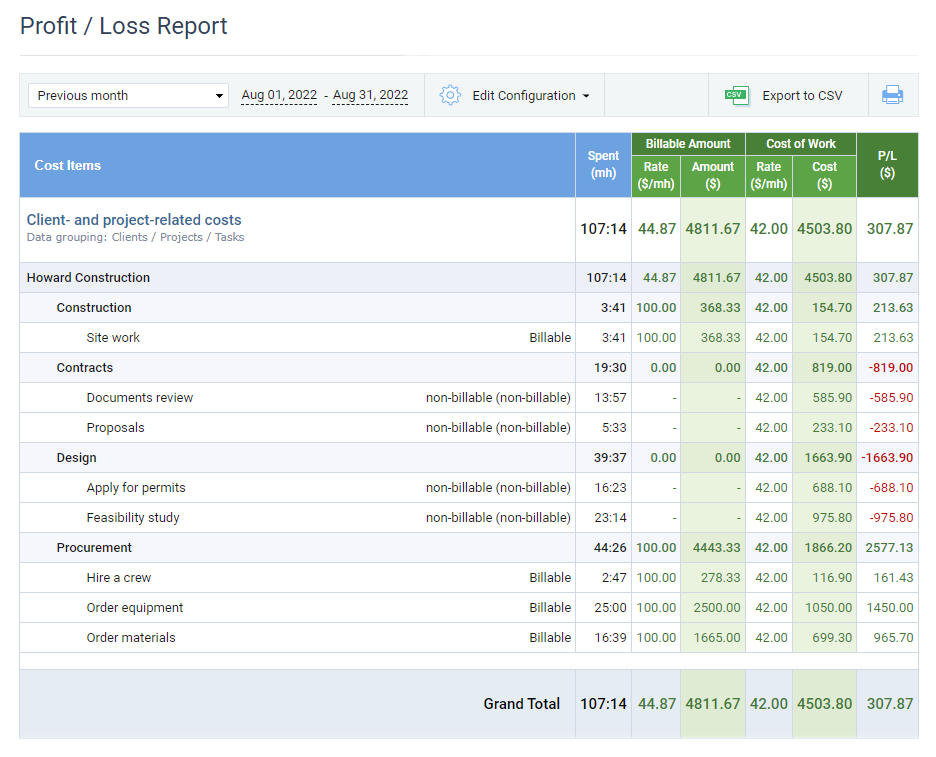
actiTIME’s Profit/Loss report calculates leave and overtime costs based on work and billing rates
Staff attendance may also pose risks to the success of the project, especially if employees have the option to switch to irregular working hours or an alternative type of working schedule. Besides, they can suddenly call in sick or take any other unplanned leave types.
The least you can do is to take into account all the planned leaves when building a project schedule and to ask employees to schedule days off and vacations in advance. With the help of a high-quality leave management solution, doing so is as easy as ABC.
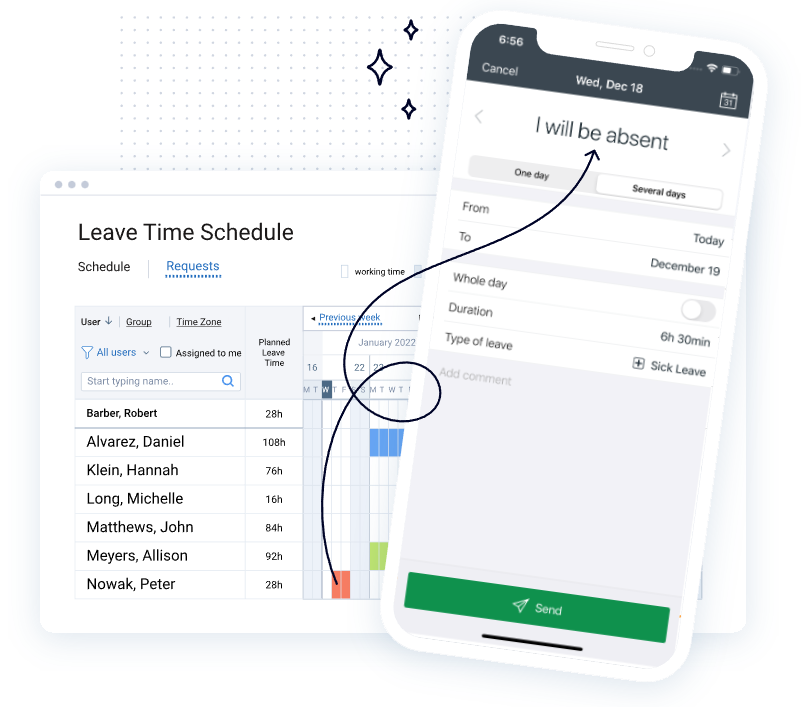
Stay in control of employee absences with actiPLANS
Step 7: Update the resource plan
Hardly any project goes as planned. Clients tend to change the project scope, processes get stuck, project team members drop out of a project for unexpected reasons, allocated time and cost budgets can get cut…
When project specifications get modified or project risks occur, it’s important that you take these circumstances into account and adjust continuously during the course of the project.
You need to pay special attention to critical project resources and implement a contingency plan early on to minimize the negative consequences. It’s important to identify risks, assess their impact, and adjust without compromising the goal of your project.

Analyze the use of time in projects with actiTIME’s reports and widgets
8. Perform post-project analysis
Post-project analysis is an essential resource management stage that helps you identify your mistakes, learn from experience, and manage future projects better. It involves:
- Reviewing how many resources you budgeted and comparing them to actually used resources.
- Looking into risks and uncertainties that took place and analyzing the effectiveness of your actions to deal with them.
- Evaluating your experience of using external resources.
Examples of questions to ask yourself during this activity:
- Were you ever over or under the scheduled hours?
- How do your project profits and losses stack up?
- What is the total cost of your work?
- Did unplanned absences affect your performance in a negative way?
- Did your project management tools and techniques contribute positively to the project outcomes?
- Were there any hindrances that could have been avoided?
To carry out your post-project analysis effectively, make sure to pick relevant resource utilization metrics in advance and collect the necessary data consistently throughout the project. Using specific metrics and performance indicators during the analysis process will help you attain better-grounded and targeted results.
Resource Planning Software Tools Worth Your Attention
1. actiPLANS
- Flexible work scheduling
- Leave management
- Mobile app
- Reports
- Automated notifications
- Mobile app
- Time tracking integration
If you’re looking for resource planning software with unparalleled flexibility, look no further than actiPLANS. With this advanced tool, you’ll be able to manage employee schedules and leave requests with ease. From mobile app access to automated notifications and time tracking integration, the software has everything you need to optimize your workforce and improve productivity.
One of actiPLANS’ standout features is its flexible work scheduling. You can create custom project activities or tasks and then assign them to employees on a visual timeline in just a few clicks. Once the schedule is made, actiPLANS will automatically notify your team about the latest schedule changes so you can save some time on employee communication.
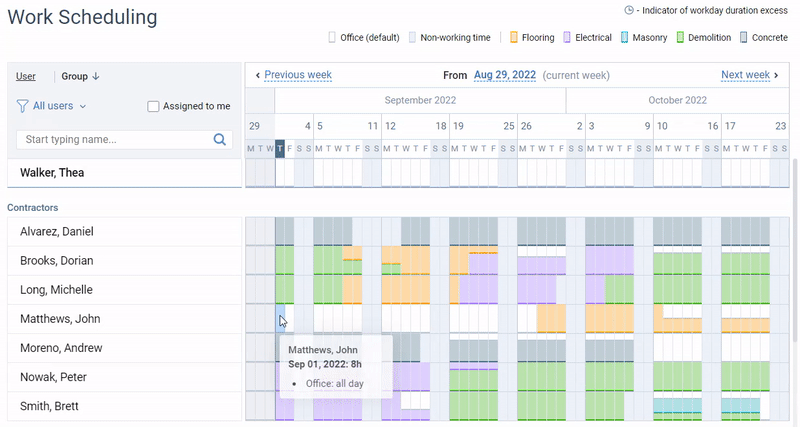
On top of that, actiPLANS features a powerful automated leave management functionality. It lets users easily submit, process, and track all types of leave requests, from vacation time and sick days to personal leave, and whatnot. This makes it easy to schedule resources around the planned absences.
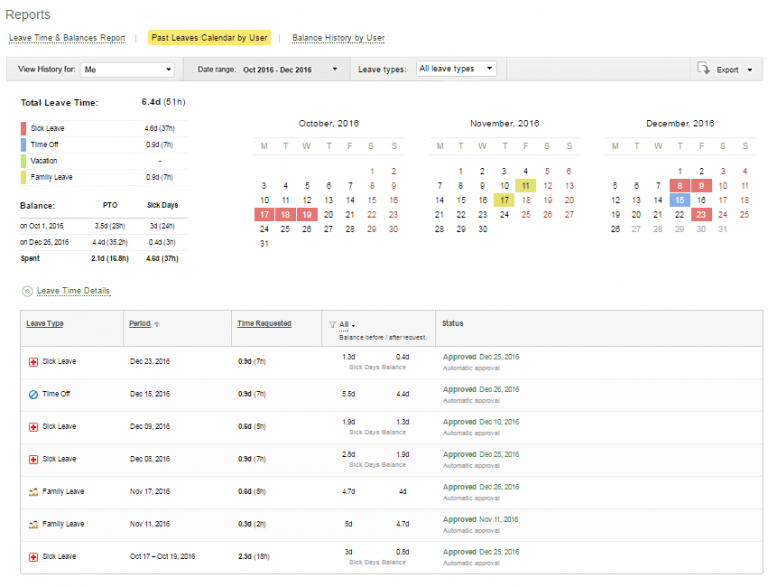
To help you stay on top of your workforce management, actiPLANS offers detailed reports that provide key insights into employee schedules, leave requests, and much more. With this feature, you’ll be able to make data-driven decisions that improve resource utilization and enhance overall productivity.
Sign up for a free actiPLANS trial to test it in action firsthand. 👈
2. Forecast
- Capacity planning
- Workload management
- Financial control
- Risk warnings
- Utilization reports
Forecast is a cutting-edge resource management solution designed to help businesses optimize their workloads, plan their capacity, and calculate utilization metrics with ease.
Workload management is one of the key strengths of Forecast. Its advanced algorithms and custom workflows allow businesses to easily allocate resources to tasks and projects, ensuring that everyone is working at maximum capacity. The platform also provides real-time performance metrics to help managers identify and address bottlenecks in the workflow, and ensure that everyone is working efficiently.
The platform also enables businesses to accurately forecast their resource needs over time, based on historical data and other relevant factors. This lets managers make informed decisions about hiring, budgeting, and project scheduling, ultimately leading to improved productivity and profitability.
3. NetSuite
- Resource management
- Accounting
- Supply chain management
- CRM
NetSuite is a cloud-based business management software that offers a comprehensive suite of business applications, including Accounting, Customer Relationship Management (CRM), Enterprise Resource Planning (ERP), and E-commerce solutions, all of which are integrated to provide real-time data insights into your company’s performance.
NetSuite’s ERP features allow you to manage your entire supply chain from a single dashboard. You can monitor inventory levels, track shipping and delivery times, and manage vendor relationships all in one place!
More than that, NetSuite provides a unified platform for managing financials, inventory, sales, and fulfillment. This means you can streamline a variety of business processes and gain greater visibility into your operations, which helps to improve efficiency and decision-making multifold.
Discover more software tools for resource planning and scheduling here 👈
Problems You Can Solve with Effective Resource Planning
- Inadequate resource allocation: Companies often have to deal with limited resources, which can severely undermine their ability to achieve the set objectives. A well-developed resource plan helps to ensure that resources are allocated where they are most needed, thus maximizing their impact.
- Budget constraints: Financial limitations require managers to make difficult decisions about where to allocate their resources. But effective resource planning enables you to use resources in a way that helps to achieve the greatest return on investment.
- Uncertainty in market demand: Despite careful forecasting, there is always a level of uncertainty in market demand, which can lead to under- or overproduction of goods and services. With proper resource planning and management, you can remain agile and better adjust to changing market conditions, ultimately reducing waste and increasing efficiency.
- Growth challenges: Rapid growth can present a number of challenges for organizations, including the need for more resources and the ability to scale operations. Effective resource planning helps to navigate these challenges by providing a roadmap for growth that takes into account your current and projected needs.
Resource Planning Glossary: Key Terms You Should Know
- Capacity planning: This activity helps to ensure you have sufficient resources to meet your current and future project needs. It involves analyzing past, present, and projected data to identify potential constraints in your organization’s capacity to produce goods or services. The ultimate goal of capacity planning is to determine the maximum output you can achieve while maintaining efficiency, economy, and quality of service.
- Work breakdown structure (WBS): This project management tool provides a comprehensive and organized breakdown of all work packages, tasks, and sub-tasks required to complete a project. It is typically presented in a hierarchical format, with the major project deliverables at the top level and the individual tasks and activities at the lowest level. By breaking down a complex project into smaller, more manageable segments, the WBS lets you estimate the entire project more accurately, establish realistic timelines, and allocate resources in a truly effective way.
- Resource utilization: This term refers to the management and distribution of resources in a project. It involves understanding the level of resource consumption required to complete a particular task and making sure that the resources are allocated appropriately to guarantee the best possible outcomes.
- Workforce optimization: It is a comprehensive strategy aimed at maximizing employee productivity and enhancing operational efficiency in a business. At its core, workforce optimization is all about aligning employee skills and competencies with the strategic goals of the organization. However, it also deals with staffing issues, employee scheduling, staff training, and performance analysis, among other things.
- Resource constraints: Resource constraints refer to limitations you may face in terms of available resources. These constraints can impact your team’s ability to achieve the set project objectives, leading to delays, lower-quality outcomes, or even ultimate project failure. For example, a company’s budget may not be sufficient to fund all the projects and initiatives that management would like to pursue. This can result in difficult decisions about which initiatives to prioritize and which to delay or cancel.
Conclusion
Congratulations, you have now mastered the art of resource planning!
We have covered the best practices and tools to help you effectively manage your resources and increase project productivity. By implementing these strategies, you will not only save time and money but also improve employee satisfaction and overall project success. And if you want to take your resource planning to the next level, we highly recommend using actiPLANS.
With its flexible settings, visual tracking tools, and powerful automation, your resource scheduling process will no longer be a headache but a breeze.
So what are you waiting for? Give actiPLANS a try today and see the difference it can make.



